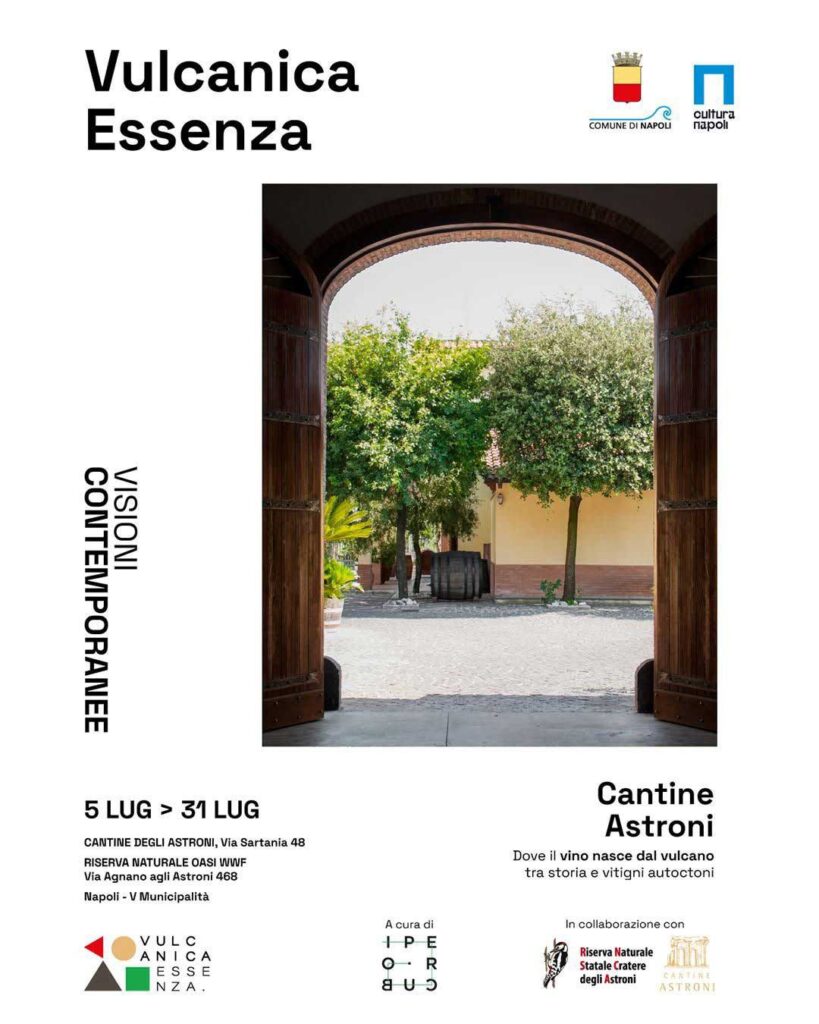Tenuta Jossa
CAMPI FLEGREI DOP BIANCO – CRU

Tenuta Jossa is the last born of the Astroni family, all the experiences and the viticultural and agronomic studies done over the last 20 years are concentrated in the project. The vineyard is located in the Metropolitan Park of the Hills of Naples and the part of the white grape vineyard is mainly cultivated with Falanghina with a balance of Fiano.
Technical product sheet
Grape variety | Falanghina, Fiano
Production area | Camaldoli hills,
Altitude | 243 m and 200 m a.s.l
Coordinates | 40°52’06.9 N; 14°10’11.3 E
Soil | The soils of this hilly area are mainly characterized by pedogenetic evolution due and characterized by deposits of past eruptions on the underlying yellow tuff, sandy soils rich in pumice and tuff.
Composition | sand 79% silt 19%, clay 2%
Traning system | Guyot
Yield | 50 quintals
Harvest period | October
Harvest | manual
Winemaking
Fermentation | Clayver and Tava amphorae
Fermentation temperature | 16° – 18° C
Refinement | “On the lees” in amphora for 8 months and at least 6 months in the bottle
Alcohol content | 12.50%
Organoleptic characteristics
Clear and consistent with a straw yellow color with hints of green. Son of the boiling soil of the Phlegrean fields, it is a scratchy white, with aromas of cedar, beeswax and tomato leaf, with a chalky minerality, which turns to smoky note.
A wine with a sharp sip, which outlines a saline trail in the mouth to make you thirsty for another sip.

The idea came to life in 2012 with the acquisition of the estate of about 3 hectares. This project condenses all the experience and the viticultural and agronomic study gained over the last 20 years.
About 50% of the property is cultivated with white grape varieties, the remaining 50% with red grapes. The topographic reference is 40° 52 06.9 N; 14° 10 11.3 E.
In the highest area, about 243 m a.s.l. and with the best exposure, there are 4 plains, 3 of which are planted with vineyards in Piedirosso and the smallest in Sciascinoso.
The vines derive from our massal selection, the orientation of the rows is South – South West, with a planting layout of 135 x 180, trained with the double inverted system.
In the lower area, starting from an altitude of 220 m a.s.l., the 6 terraces of Falanghina begin, one of which is destined for Fiano always deriving from our massal selection, which decline up to an altitude of 200 m a.s.l.
The North-South orientation of the rows arranged in a unilateral guyot system with a 90 x 170 plant layout.
The soils of this hilly area are characterized predominantly by the pedogenetic evolution of the deposits of past eruptions on the underlying yellow tuff.
Vineyard and terraces with sandy soils, rich in pumice and tuff, located on the Metropolitan Park on the hills of Naples.

The Falanghina probably derives from ancient Greek-Balkan stocks and seems to owe its name to its expanded habit, for which it was traditionally tied to support poles called “falanga”, from which Falanghina, or “vine supported by poles”.
The vine has medium-sized bunches, long and compact, cylindrical in shape and winged on one side. The grains are medium in size, spherical in shape with medium concentrations of bloom on the thick skins with gray colors with yellow reflections. It is quite vigorous, with average, constant yields and harvests starting from the third week of September.

